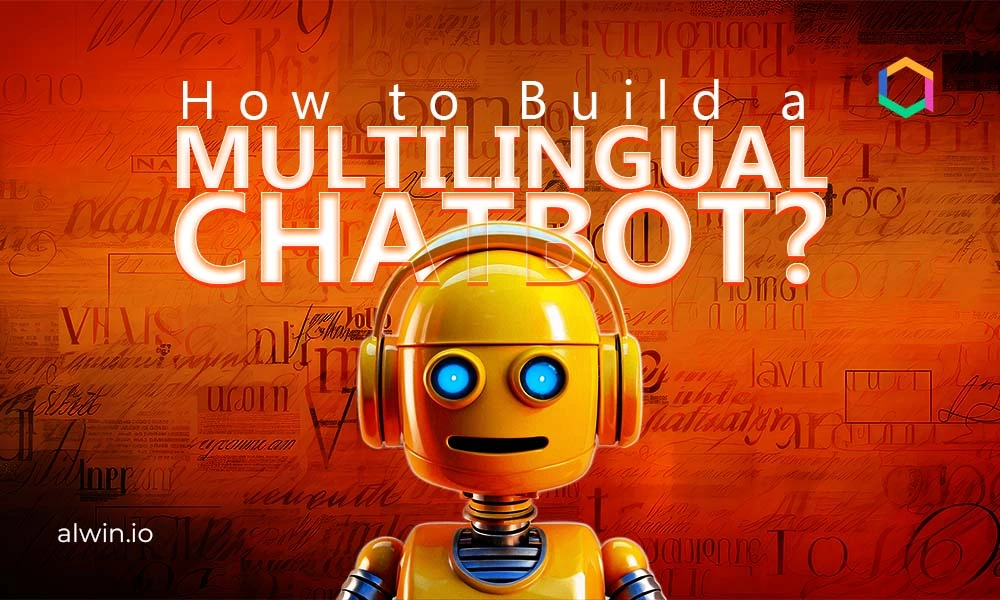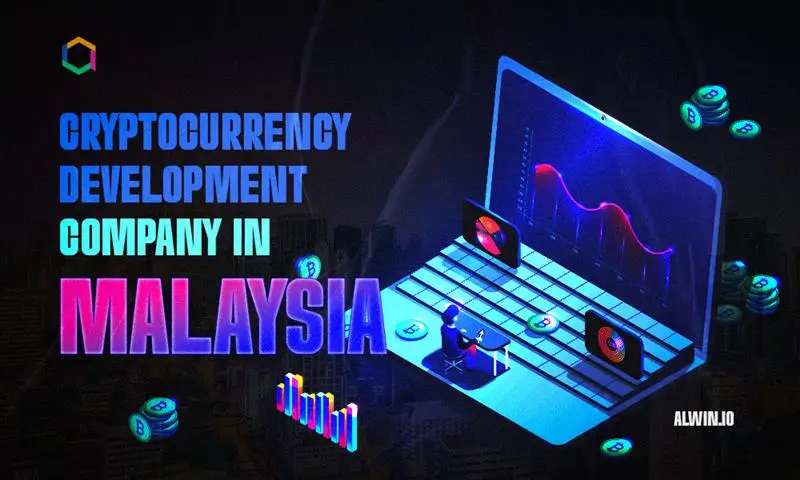In an increasingly interconnected world, 2025 is pivotal for businesses aiming to improve customer experiences. As global markets expand, the ability to communicate effectively across languages is no longer a luxury it’s a necessity. Enter multilingual chatbots the solution that bridges language barriers while improving user engagement.
The growing importance of global customer interactions cannot be overstated. Businesses now cater to audiences spanning continents, each with unique languages and cultural aspects. Providing seamless, localized support is vital for building trust and loyalty. This is where multilingual chatbots shine, offering real-time responses in a customer’s preferred language, making every interaction feel personal and valued.
Imagine this: your customer from Tokyo chats in Japanese, while another from São Paulo gets instant support in Portuguese simultaneously. Multilingual chatbots transform the way businesses communicate worldwide, redefining how companies connect with diverse audiences. With advancements in AI, NLP (Natural Language Processing), and machine translation, 2025 is the year to embrace this technology and gain an edge.
Let’s explore the steps and benefits of creating a multilingual chatbot that aligns with the needs of a global audience.
What is a Multilingual Chatbot?
A multilingual chatbot is an AI-powered conversational assistant designed to communicate in multiple languages. Unlike traditional single-language chatbots, which are limited to interacting in one language, multilingual chatbots can switch between languages in real time, offering personalized support to users across different linguistic and cultural backgrounds.
At their core, multilingual chatbots use Artificial Intelligence (AI) and Natural Language Processing (NLP) technologies to understand, process, and respond to queries in various languages. These advanced tools enable chatbots to go beyond basic translation, incorporating cultural nuances, idiomatic expressions, and local contexts to create a truly engaging user experience.
For instance, a traditional chatbot might only provide support in English, alienating non-English-speaking customers. On the other hand, a multilingual chatbot accommodates diverse languages and ensures that the tone, phrasing, and style resonate with the user's cultural expectations.
Why Do Businesses Need Multilingual Chatbots in 2025?
The rapid globalization of businesses in 2025 demands solutions to address an expanding customer base. As companies work to engage with audiences worldwide, multilingual chatbots emerge as a strategic asset, offering unparalleled support and connection in their preferred languages.
1. Expanding Markets and Growing Diversity in Customer Bases
With new businesses entering the international markets, the diversity of customer languages and cultural backgrounds is more pronounced than ever. A one-size-fits all approach no longer works in customer engagement. Multilingual chatbots enable businesses to communicate fluently with audiences across geographies, helping them break language barriers and establish a local presence in global markets.
For example, an e-commerce company serving customers in Asia, Europe, and South America can use a multilingual chatbot to interact in Mandarin, French, and Spanish so no customer feels excluded.
2. Addressing Customer Preferences and Creating Better User Experiences
Customers prefer brands that make an effort to speak their language. Studies show that users are more likely to trust and engage with companies that provide support in their native tongue. Multilingual chatbots deliver personalized experiences, helping businesses stand out by genuinely caring for their audience's preferences.
By understanding linguistic nuances and cultural contexts, these chatbots make interactions feel more natural and engaging, leading to higher customer satisfaction and loyalty.
3. Supporting Global Strategies with a Humanized Touch
Customers are drawn to brands that communicate in their language. Research shows that users are more likely to trust and engage with companies offering support in their native tongue. Multilingual chatbots provide tailored experiences, helping businesses differentiate themselves by valuing their audience's preferences.
By understanding language subtleties and cultural contexts, these chatbots create interactions that feel authentic and engaging, resulting in higher customer satisfaction and loyalty.
As businesses scale globally, maintaining a personal connection with customers becomes challenging. Multilingual chatbots bridge this gap by simulating human-like conversations in the customer’s native language.
They offer a humanized touch to global strategies, helping businesses build trust and foster deeper relationships with their audience. Whether it’s resolving queries, providing recommendations, or guiding users through processes, multilingual chatbots ensure that customers feel heard and understood, regardless of their location.
Key Features of Using Multilingual Chatbots In Business
The transformative potential of multilingual chatbots lies in their ability to deliver personalized communication in multiple languages. Here are the key features that make multilingual chatbots essential for businesses in 2025:
1. AI-Powered Language Translation
Multilingual chatbots utilize the power of Artificial Intelligence (AI) to perform accurate and context-aware language translation. Unlike generic translation tools, these chatbots use Natural Language Processing (NLP) and Machine Learning (ML) to understand the meaning behind the words, making responses not only grammatically correct but also culturally relevant.
2. Support for Regional Dialects and Idioms
Languages are not uniform, they have regional variations and idiomatic expressions. Multilingual chatbots go beyond standard translations by incorporating regional dialects and local idioms to make conversations more relatable and engaging.
3. Real-Time Context Understanding
An essential feature of multilingual chatbots is their ability to maintain context across interactions, even when users switch between languages mid-conversation. Through contextual AI, these chatbots can:
- Retain the flow of the conversation.
- Avoid repetitive questions.
- Provide coherent and consistent responses across multiple languages.
4. Business Tools Integration
To maximize efficiency, multilingual chatbots integrate effortlessly with various business tools and platforms such as CRMs, help desks, e-commerce platforms, and social media channels. This ensures:
- Unified data management: Sync customer interactions across all channels.
- Enhanced productivity: Automate workflows and improve team efficiency.
- Scalable solutions: Enable businesses to expand their multilingual capabilities as they grow.
How to Build a Multilingual Chatbot in 2025?
Creating a multilingual chatbot in 2025 is a step-by-step process that integrates cutting-edge technologies with strategic planning. Here’s a detailed guide to help you design a chatbot that caters to global audiences effectively.
Step 1: Define Business Goals and Target Audience
Start by identifying your chatbot’s purpose.
- What specific problems will chatbot need to slove?
- Who are your primary users?
- What languages do they speak?
Step 2: Choose the Right Language Models
Select advanced AI language models like GPT-4.5, BERT, or Llama to power your chatbot. These models excel in understanding complex sentence structures, idiomatic expressions, and cultural nuances, ensuring accurate and meaningful responses in multiple languages.
- GPT-4.5: Ideal for dynamic and conversational interactions.
- BERT: Best for tasks requiring contextual understanding.
- Llama: Useful for lightweight deployments and scalability.
Step 3: Select a Chatbot Development Platform
Choose a platform that aligns with your technical capabilities and scalability needs. Popular options in 2025 include:
- Dialogflow: Known for easy integration and NLP support.
- Rasa: Offers open-source flexibility for custom features.
- Microsoft Bot Framework: Excellent for enterprise-grade solutions.
Step 4: Implement NLP and Machine Translation APIs
Integrate NLP tools and machine translation APIs to enable real-time language processing. Examples include:
- Google Cloud Translation API: For high-accuracy translations.
- Amazon Translate: For scalable multilingual support.
- Microsoft Azure Cognitive Services: For comprehensive AI-driven language solutions.
These APIs allow your chatbot to switch between languages, understand user inputs, and respond contextually.
Step 5: Train Your Chatbot with Localized Data
Provide your chatbot with training datasets that include regional dialects, cultural idioms, and context-specific scenarios. The more localized the data, the better the chatbot can respond naturally.
- Collect user queries from your target audience.
- Incorporate feedback loops to refine accuracy.
Step 6: Test for Accuracy, Scalability, and User Experience
Conduct thorough testing to ensure your chatbot meets the following criteria:
- Accuracy: Evaluate responses for linguistic and contextual precision.
- Scalability: Test its ability to handle multiple conversations simultaneously.
- User Experience: Ensure the interface is intuitive and responsive.
Simulate real-world interactions across different languages and scenarios to identify and fix potential issues.
Step 7: Deploy, Monitor, and Continuously Improve
Once your chatbot is ready, deploy it across the desired channels—websites, apps, or social media. Post-deployment, monitor its performance using analytics to identify areas for improvement.
- Use metrics like response time, user satisfaction scores, and engagement rates.
- Continuously update your chatbot with new data to improve accuracy and functionality.
Common Challenges in Developing Multilingual Chatbots
1. Linguistic Nuances and Cultural Sensitivities
Capturing idioms, slang, and cultural subtleties can be tricky. Localized datasets and context-aware AI models help overcome this.
2. Translation Accuracy
Mistranslations can lead to confusion. Advanced NLP models and human oversight ensure precision.
3. Scalability vs. Efficiency
Scaling to multiple languages increases resource demands. Cloud platforms and optimized AI models balance performance.
4. Localized User Interface
Adapting the interface for cultural preferences, like text alignment and symbols, enhances usability.
5. Consistent Quality Updates
Languages evolve, and continuous feedback and updates are essential to maintain relevance and accuracy.
Best Practices for Building a Multilingual Chatbot
Creating an effective multilingual chatbot requires a strategic approach to address user needs across diverse languages and cultures. Here are the best practices to ensure success:
1. Prioritize Languages Based on Audience Demographics
Focus on the languages most spoken by your target audience to maximize engagement and ROI. Conduct market research to identify regions with the highest potential.
2. AI Models Pre-Trained on Multilingual Datasets
Use AI models like GPT-4.5 or BERT that are already trained on diverse linguistic datasets. This minimizes development time and ensures high-quality responses.
3. Incorporate Feedback Loops for Continuous Improvement
Regularly collect user feedback to refine the chatbot’s language understanding and contextual accuracy. Feedback helps address gaps and enhances performance over time.
4. Ensure a Conversational Tone Aligned with Cultural Contexts
Adapt your chatbot’s tone and responses to match cultural expectations. For instance, formal language might be preferred in some regions, while a casual tone may work better in others.
5. Regularly Test with Native Speakers
Native speakers can provide insights into the accuracy of translations, idiomatic expressions, and cultural appropriateness. Regular testing ensures the chatbot maintains relevance and authenticity.
How Multilingual Chatbots Benefit Businesses in 2025
Multilingual chatbots are transforming industries by bridging language barriers and enhancing customer interactions. Here’s how they drive value across key sectors:
1. E-commerce
Businesses can expand into international markets by offering customer support in native languages. Chatbots handle inquiries, recommend products, and process returns efficiently.
Example: An online retailer boosted global sales by integrating a multilingual chatbot that supports 15 languages, enabling personalized shopping experiences.
2. Healthcare
Patients access multilingual chatbots for scheduling appointments, receiving medication reminders, and understanding medical instructions in their preferred language.
Example: A healthcare startup uses chatbots to provide multilingual telehealth services, reaching underserved communities.
3. Education
Educational institutions and e-learning platforms utilize multilingual chatbots to assist students worldwide with course materials, assignments, and enrollment processes.
Example: A leading e-learning platform enhanced user retention by offering chatbot support in multiple languages.
4. Travel and Hospitality
Travel companies leverage multilingual chatbots for booking assistance, itinerary updates, and resolving traveler queries on the go.
Example: A global airline streamlined its customer support by deploying a multilingual chatbot, reducing response times by 50%.
Future Trends in Multilingual Chatbot Development
As technology evolves, multilingual chatbots are poised to become even more sophisticated and impactful. Here are the key trends shaping their future:
1. Role of Generative AI in Improving Chatbot Fluency
Advanced AI models like GPT-5 will enhance chatbot fluency by providing more human-like and contextually accurate responses across languages. These models will better handle complex conversations and nuanced expressions.
2. The Rise of Voice-Based Multilingual Assistants
With the increasing adoption of voice interfaces, multilingual chatbots will transition into voice-based assistants. This allows businesses to cater to users who prefer voice communication, improving accessibility and engagement.
3. Integrating Chatbots with Augmented Reality (AR)
The combination of AR and chatbots will create immersive experiences. For example, travelers could use AR-powered chatbots to navigate foreign cities in their native language, with real-time translations overlaid on their smartphone screens.
Conclusion
In 2025, multilingual chatbots stand at the forefront of global business communication, breaking language barriers and fostering seamless customer interactions. Building one involves critical steps: defining business goals, selecting advanced language models, integrating NLP tools, training with localized data, and continuous improvement to ensure scalability and accuracy.
As businesses expand their horizons, multilingual chatbots become indispensable for enhancing user experiences, driving engagement, and achieving global reach. Their ability to provide personalized, real-time support across languages makes them a true game-changer in today’s interconnected world.
Ready to revolutionize your business communication? Partner with WeAlwin Technologies, a leading AI development company, to build multilingual chatbots tailored to your needs. Transform the way you connect with your global audience start your journey today!



